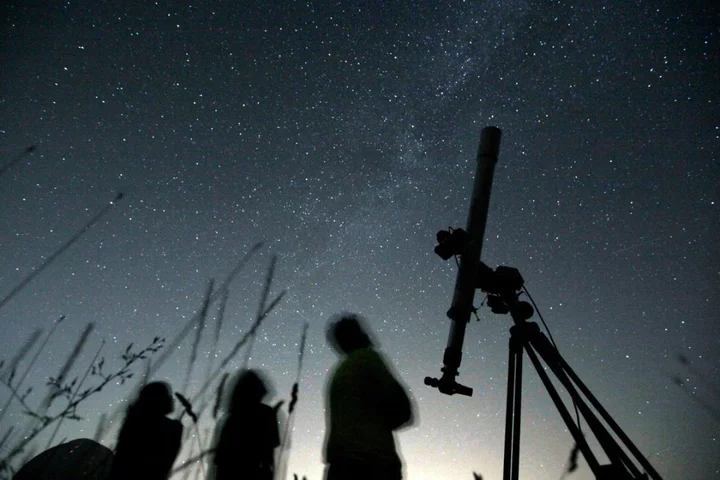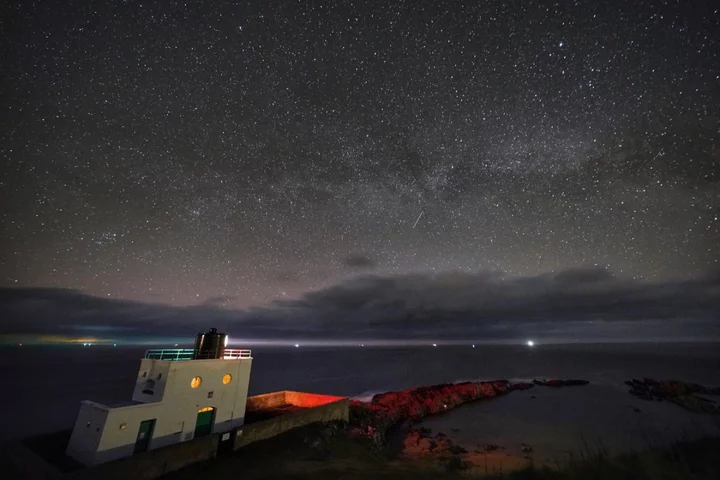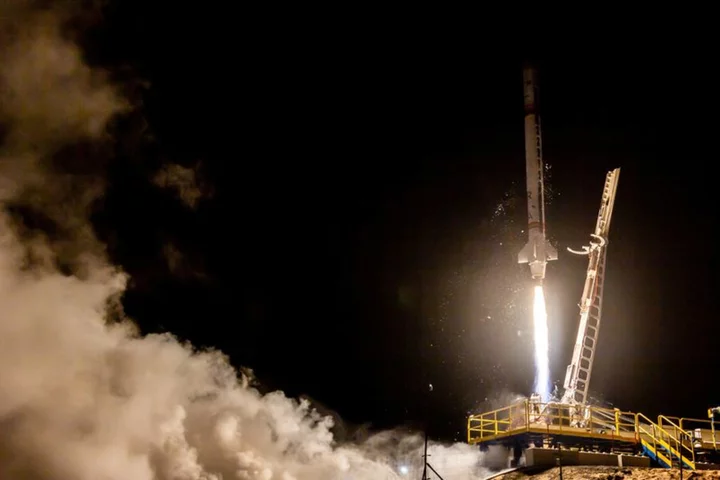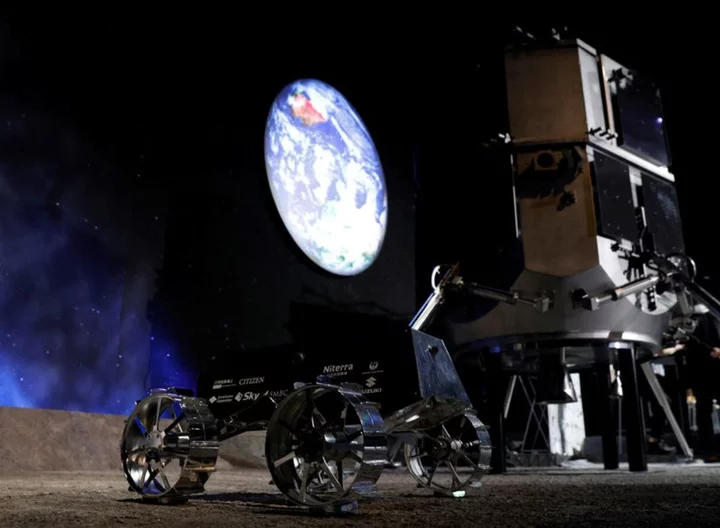
Infrared ‘aurora’ like northern lights spotted on Uranus could help find alien life, scientists say
Scientists have spotted an infrared aurora on Uranus that could help us find alien life. On Earth, aurorae are best known in the form of the northern lights, when bright light streaks across the sky. Uranus also has its own aurora – though it is not visible in the same way, because of the different atmosphere on that planet. Researchers have known about ultraviolet aurorae on Uranus since 1986. But now scientists have confirmed there are infrared aurorae on the distant planet, too. Scientists hope that the findings could help explain the magnetic fields of other planets in our solar system. And it could help us find out whether distant planets support alien life. Aurorae happen when charged particles arrive at a planet and hit its atmosphere, brought down through its magnetic field lines. To better understand those on Uranus, researchers analysed the light from the planet and watched for a specific charged particle that changes brightness depending on how how it is and how dense the atmosphere is, so that it can be used as a thermometer. The researchers found that the density of that particle significantly increased, which suggests they are being ionised by an infrared aurorae, they say. Scientists hope that will inform our understanding of other, similar planets, as well as which worlds might be suitable for alien life. “The temperature of all the gas giant planets, including Uranus, are hundreds of degrees Kelvin/Celsius above what models predict if only warmed by the sun, leaving us with the big question of how these planets are so much hotter than expected? One theory suggests the energetic aurora is the cause of this, which generates and pushes heat from the aurora down towards the magnetic equator,” said Emma Thomas from the University of Leicester, who was lead author on the new study. “A majority of exoplanets discovered so far fall in the sub-Neptune category, and hence are physically similar to Neptune and Uranus in size. This may also mean similar magnetic and atmospheric characteristics too. By analysing Uranus’s aurora which directly connects to both the planet’s magnetic field and atmosphere, we can make predictions about the atmospheres and magnetic fields of these worlds and hence their suitability for life. “This paper is the culmination of 30 years of auroral study at Uranus, which has finally revealed the infrared aurora and begun a new age of aurora investigations at the planet. Our results will go on to broaden our knowledge of ice giant auroras and strengthen our understanding of planetary magnetic fields in our solar system, at exoplanets and even our own planet.” The findings might also help explain a mysterious phenomenon on Earth known as geomagnetic reversal, where the north and south pole switch around. Scientists still know very little about that rare phenomenon, and how it might affect things such as satellites and communications. That process happens every day on Uranus, however. Researchers hope they can use its aurorae to get better data on the nature of that reversal – and what might happen if Earth has one, too. The findings are described in a new paper, ‘Detection of the infrared aurora at Uranus with Keck-NIRSPEC’, published in Nature Astronomy. Read More People don’t know their Uranus from Eridanus when it comes to astronomy Scientists find surprise ‘layer’ underneath surface of Mars Scientists see huge explosion in space – and it could explain life
2023-10-28 00:46

Putin aims to have Russian space station by 2027
President Vladimir Putin said on Thursday the first segment of Russia's new orbital station, which Moscow sees as
2023-10-27 07:50

Scientists make the biggest simulation of our cosmos ever, with the mass of 300 billion galaxies
Scientists have created what they say is the biggest simulation of our cosmos ever. The virtual universe has the mass of 300 billion galaxies, packed into a space with edges ten billion light years across. Scientists hope that it will help tell us how the real universe that surrounds us first evolved. They could also help address problems in our understanding of physics that currently suggest we might have made deep mistakes about the cosmos. But the first results from the simulation suggest that it might not work: the findings do not get rid of the tensions between different observations about the universe that have proven so difficult to scientists. Researchers created the simulation, named FLAMINGO, by taking the vast amount of data that has been gathered by telescopes such as Nasa’s JWST and other projects. Those projects give information about galaxies, stars and the other arrangement of matter in our cosmos, which can then be fed into the computer. Researchers then hope that the computer can use that data to simulate the evolution and nature of our universe. That can then help resolve those fundamental difficulties we currently face in physics. One of those issues come from the current theory that the properties of our universe are decided by only a few “cosmological parameters”. We can measure those parameters very precisely. But scientists have run into issues because those parameters do not always match. For instance, there are multiple ways of measuring the Hubble constant, or the speed at which the universe is expanding – but those multiple ways show different results, and scientists have not been able to explain them. Scientists hope that the simulation can help explain or resolve that tension. But it is yet to do so. That is just one of the many ways that the creators of the FLAMINGO simulations hope that they can be used to better understand the universe and the observations that we have of it. It might also allow us to make new kinds of discoveries: the vast amount of data means that it can construct random, virtual universes and see how theories work in there, for instance. The work is described in three papers, all of which are published in the Monthly Notices of the Royal Astronomical Society today. Read More Scientists see huge explosion in space – and it could explain life Massive space explosion observed creating elements needed for life Tim Peake: Possibility of all-UK space mission a ‘very exciting development’
2023-10-26 01:50

Rock collected by Apollo 17 astronaut in 1972 reveals moon's age
By Will Dunham WASHINGTON During the Apollo 17 mission in 1972 - the last time people walked on
2023-10-23 20:23

Production woes plague earnings for Boeing, RTX and Spirit Aero
By Valerie Insinna and Pratyush Thakur WASHINGTON After a succession of production snafus, investors will question whether U.S.
2023-10-23 18:18

SpaceX signs deal to launch key European satellites - WSJ
SpaceX has signed a deal to launch up to four of Europe's flagship navigation and secure communications satellites
2023-10-23 16:58

India calls off crucial test in crewed space mission
MUMBAI (Reuters) -India on Saturday called off a key test in its ambitious crewed space mission Gaganyaan, the Indian Space
2023-10-21 12:19

Bezos' Blue Origin sees third executive departure amid internal restructuring
By Joey Roulette WASHINGTON Blue Origin's senior vice president of operations is leaving "for personal reasons," according to
2023-10-21 01:57

Spain's PLD Space expects first orbital launch in Q1 2026 from French Guiana
MADRID Spanish rocket company PLD Space plans a first orbital launch from French Guiana in the first quarter
2023-10-20 20:16

Japan gives $80 million subsidy to moon exploration startup ispace
TOKYO Japan will provide a 12 billion yen ($80 million) subsidy for moon exploration startup ispace, industry minister
2023-10-20 10:52

Scientists receive powerful ‘fast radio burst’ from the depths of the universe
The Earth has been hit by a powerful blast of energy from the very depths of the universe. The fast radio burst is the most distant of its kind of ever seen, coming from so far away that it has travelled eight billion years to get to Earth. It is also astonishingly powerful, one of the most energetic of its kind ever seen. In less than a second, it released the same energy that comes out of the Sun in more than 30 years. Fast radio bursts are intense, short bursts of energy that come from unknown but extreme activity in space. Scientists are still unsure of how they are formed, but explanations have included everything from extraterrestrial technology to neutron stars. The newly discovered burst appears to come from a small group of merging galaxies, scientists say, which helps support current theories about where they come from. But the intensity of the burst is harder to explain, which challenges our understanding of how they are actually emitted. “While we still don’t know what causes these massive bursts of energy, the paper confirms that fast radio bursts are common events in the cosmos and that we will be able to use them to detect matter between galaxies, and better understand the structure of the Universe,” said Ryan Shannon, from the Swinburne University of Technology. The blasts could be useful ways of answering some of the deepest questions about our cosmos, such as how much it actually weighs. At the moment, attempts to answer that have led to confusing results. “If we count up the amount of normal matter in the Universe — the atoms that we are all made of — we find that more than half of what should be there today is missing,” said Professor Shannon. “We think that the missing matter is hiding in the space between galaxies, but it may just be so hot and diffuse that it’s impossible to see using normal techniques. “Fast radio bursts sense this ionised material. Even in space that is nearly perfectly empty they can ‘see’ all the electrons, and that allows us to measure how much stuff is between the galaxies.” The blast was spotted last year, using a telescope in Japan. Researchers then used other telescopes to verify the find and examine it in more detail. “Using ASKAP’s array of dishes, we were able to determine precisely where the burst came from,” said Stuart Ryder, the first author on the paper. “Then we used the European Southern Observatory (ESO) Very Large Telescope (VLT) in Chile to search for the source galaxy, finding it to be older and further away than any other FRB source found to date, and likely within a small group of merging galaxies.” The findings are reported in a new paper, ‘A luminous fast radio burst that probes the Universe at redshift 1’, published in the journal Science. Read More Scientists unveil radical new ‘missing law’ to explain the universe India’s Modi declares goal to land human on Moon by 2040 Researchers reveal source of largest ever Mars quake
2023-10-20 02:20

India aims to send astronaut to the moon by 2040
NEW DELHI India aims to send an astronaut to the moon by 2040, the government said on Tuesday,
2023-10-17 17:17
